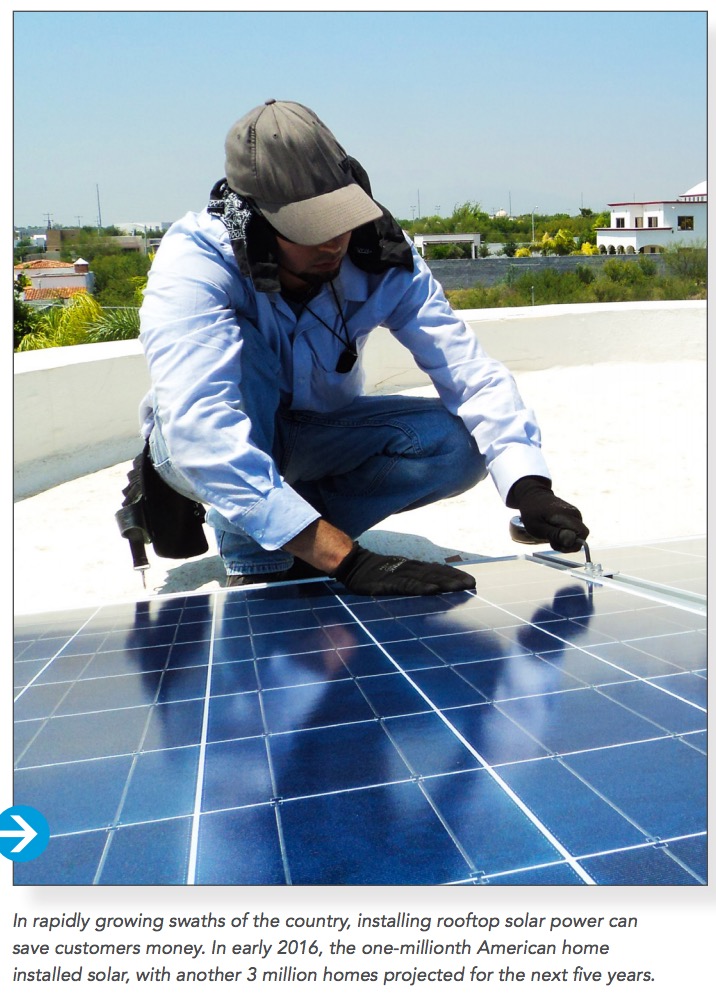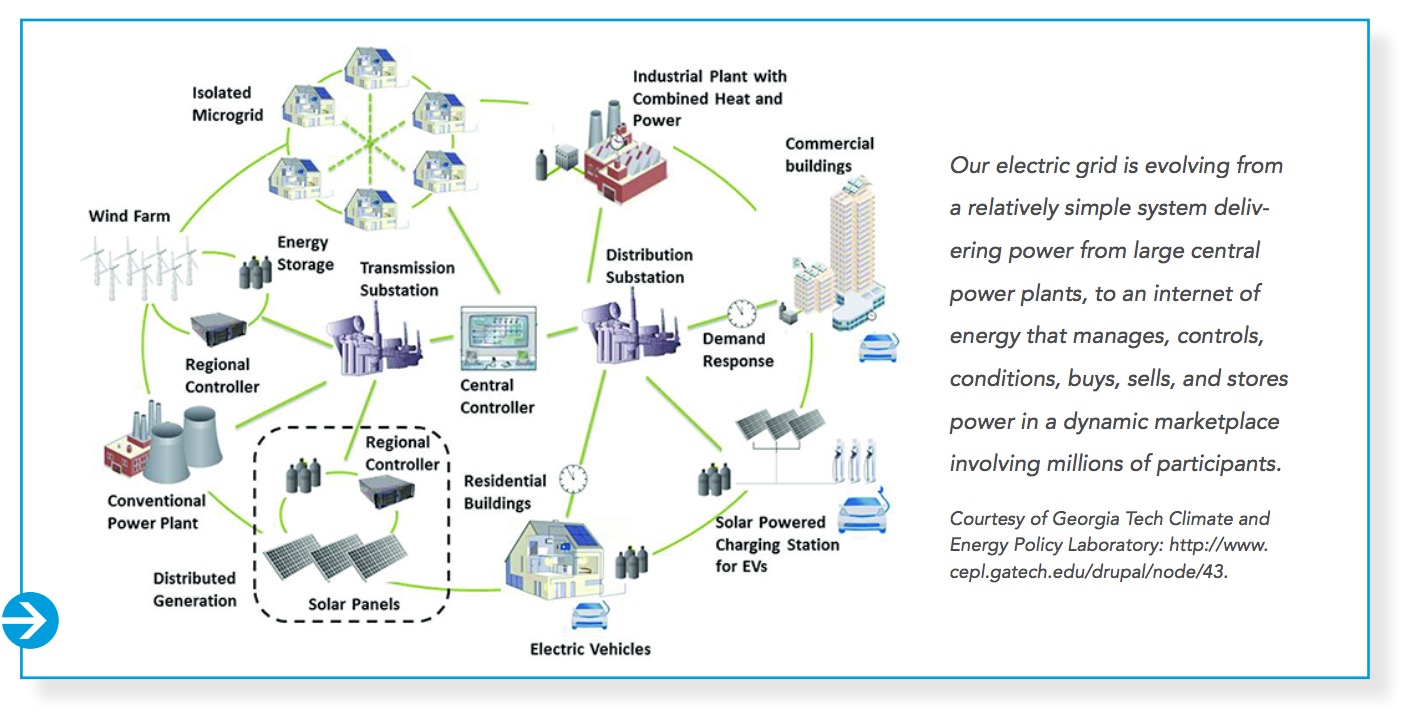THE EVERGREEN STATE COLLEGE
CENTER FOR SUSTAINABLE INFRASTRUCTURE
Introduction and Overview
The Focus
 Rewiring the Northwest’s Energy Infrastructure paints a picture of an integrated energy system in Oregon and Washington that, by 2040, is among the most sustainable and resilient in the world. At the same time, that 2040 energy system will be beneficial and affordable to the people that will pay for it: rich, middle-class, and lower-income people alike, as well as institutions, communities, and businesses big and small.
Rewiring the Northwest’s Energy Infrastructure paints a picture of an integrated energy system in Oregon and Washington that, by 2040, is among the most sustainable and resilient in the world. At the same time, that 2040 energy system will be beneficial and affordable to the people that will pay for it: rich, middle-class, and lower-income people alike, as well as institutions, communities, and businesses big and small.
The project also explores how our investment strategies for energy infrastructure need to change to achieve performance and cost excellence, and to deliver more long-term community value and benefit for each infrastructure dollar we spend.
The paper is presented in these sections:
- Introduction and Overview
- Key Drivers for Transformative Change
- Window on the Future: A Vision for Our 2040 Energy System
- World Class by 2040: Is It Feasible and Affordable for the Northwest?
- Rethinking Energy Infrastructure Investment
- Two More Audacious Ideas
The Five Big Goals for 2040 Program
This project on energy is the first in the “Five Big Goals for 2040” research program of the Center for Sustainable Infrastructure (CSI) at The Evergreen State College, to engage top Northwest thought leaders and innovators in mapping the path to achieve a transformative 2040 infrastructure vision.
CSI champions a new paradigm and discipline for infrastructure investment. During 2014, CSI interviewed 70 of the region’s top infrastructure innovators and thought leaders. Our report based on these interviews, Infrastructure Crisis, Sustainable Solutions: Rethinking Our Infrastructure Investment Strategies, uncovered both crisis and opportunity. Quality infrastructure is essential to the economic vitality and quality of life of our communities, but billions of dollars will be required to keep the Northwest’s aging infrastructure – our energy, water, transportation and waste management systems – in working order. Replicating ‘business as usual’ infrastructure strategies, however, will lock in unnecessarily wasteful, expensive, polluting, and vulnerable systems for decades to come. The question the inaugural report addresses is: ‘How do we get much smarter about how we’ll invest that money?
Because most infrastructure investment is long-term – facilities are often designed to function and are paid for over 25 years or more – the inaugural report offered “Five Big Goals for 2040” as a conversation starter. The idea was to foster alignment around a vision for how our infrastructure systems will work 25 years from now. This will position us to avoid investments today that are at risk of becoming outdated or obsolete in a decade or two, in favor of investments that move us where we want to go in the longer-term.
The Five Big Goals for 2040 program is diving deep on each goal in turn – starting with energy – to harness the insights of top innovators and thinkers in five special reports, rolled out between 2016 and 2018. These reports will provide both inspiration and guidance to current and future infrastructure decision-makers and professionals.
Approach for This Project
This paper dives into the Energy Goal. The framing question, which CSI posed to some three dozen energy thought leaders and innovators, is: How can the Northwest build one of the world’s most sustainable, resilient, and affordable energy systems by 2040?
This report distills and synthesizes the insights of these thought leaders, supplemented by targeted research and literature review.
It pays special attention to optimizing the whole energy system across traditional silos. Because we currently manage electricity, transportation, heating, waste, and water infrastructures separately, redirecting investment toward innovative systems that connect these infrastructures to maximize shared benefits will be one of the Northwest’s great institutional challenges.
What do we mean by a ‘world-class’ energy system? Simply this: In 2040, Oregon and Washington will be among the best in class, with regions around the world looking to the Pacific Northwest as a center of expertise and groundbreaking examples for super-sustainable, resilient, affordable, and integrated energy infrastructure systems.
The thought leaders whom CSI Director Rhys Roth formally interviewed over the summer of 2015 included top Oregon and Washington utility executives, advocates, business innovators, regulators, analysts, and agency leaders. These thought leaders generously shared their insight and perspectives on crucial questions, such as:
- In 2040, how will a world-class sustainable, resilient, and affordable energy system in the Northwest – including electricity, transportation, and heat – differ from today’s?
- What are the right system-wide goals, and the most effective and affordable transition strategies to achieve them?
- Where are the best integration opportunities where energy infrastructure investments can leverage and enhance investment by other infrastructure providers for mutual benefit?
- How can we generate the greatest economic, equity, and community-wide benefits from the transition?
- What high-level policy and regulatory changes can be most helpful in setting the region on the right infrastructure trajectory?
- What do we need to do to build a highly-skilled energy workforce and address the coming retirement wave?
The technology and policy changes transforming the energy marketplace today are astonishing, and the implications for the 25 year time frame of this project are seismic. In many ways, our thinking has yet to catch up. Even the thought leaders interviewed for this project are struggling to understand these implications and to craft effective strategies for adapting to this dynamic playing field.
To test an initial synthesis of the thinking of the thought leaders and other analysts and commentators, an Executive Review Team of 20 leaders provided detailed feedback on a draft of this report in fall of 2015. This review was essential for ground-truthing the report’s details and significantly reshaping its conclusions and recommendations toward something closer to a shared perspective. That said, the report’s shortcomings, as well as its assertions, remain completely the responsibility of its primary author, CSI Director Rhys Roth.
Download full version (PDF): Rewiring the Northwest’s Energy Infrastructure
About the Evergreen State College Center for Sustainable Infrastructure
evergreen.edu/sustainableinfrastructure
The Evergreen State College has launched the Center for Sustainable Infrastructure (CSI) with a goal of developing innovative solutions to these massive public works challenges. Based at the college’s Olympia campus, the Center links regional innovators, advocates sustainable best practices, and develops skilled professionals who will put these principles to work in infrastructure development.
Tags: CSI, Evergreen State College, Evergreen State College Center for Sustainable Infrastructure, WA, Washington







 RSS Feed
RSS Feed